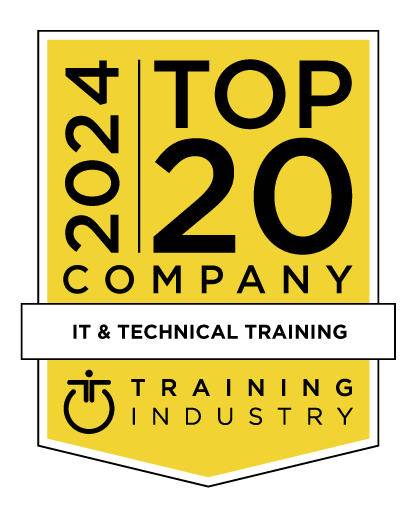title
Please take a moment to fill out this form. We will get back to you as soon as possible.
All fields marked with an asterisk (*) are mandatory.
Certified in Governance, Risk and Compliance (Online Self-Paced)
Course Description
Overview
A professional earning the Certified in Governance, Risk and Compliance (CGRC®) is an information security practitioner who advocates for security risk management in pursuit of information system authorization to support an organization’s mission and operations in accordance with legal and regulatory requirements.The broad spectrum of topics included in the CGRC Common Body of Knowledge (CBK®) ensure its relevancy across all disciplines in the field of information security.
This course includes 180-day access to course content and Education Guarantee.
Education Guarantee: Learners who don’t pass the exam on their first attempt may access the same training again at no cost within one year from the end of the initial training. The education guarantee covers the cost of the second course.
Cancellation Policy: Refunds for any ISC2 courses will not be provided.
What’s included with each option:
- Self-paced online adaptive learning journey
- Data-driven analytics dashboard for real-time feedback on learner progress
- Robust search functionality to narrow topics
- Pre- and post-course assessments
- Knowledge checks and end-of-domain quizzes
- Digital eTextbook
- Interactive content
- Domain-by-domain study sheets with key points
- Email content support
- Online interactive flash cards
- Glossary of Terms
Objectives
Prerequisites
-
Candidates must have a minimum of two years cumulative work experience in one or more of the seven domains of the CGRC CBK.
Topics
- Demonstrate knowledge in security and privacy governance, risk management, and compliance program
- Principles of governance, risk management, and compliance
- Risk management and compliance frameworks using national and international standards and guidelines for security and privacy requirements (e.g., National Institute of Standards and Technology (NIST), cybersecurity framework, Control Objectives for Information and Related Technology (COBIT), International Organization for Standardization/International Electrotechnical Commission (ISO/IEC))
- System Development Life Cycle (SDLC) (e.g., requirements gathering, design, development, testing, and operations/maintenance/disposal)
- Information lifecycle for each data type processed, stored, or transmitted (e.g., retaining, disposal/destruction, data flow, marking)
- Confidentiality, integrity, availability, non-repudiation, and privacy concepts
- System assets and boundary descriptions
- Security and privacy controls and requirements
- Roles and responsibilities for compliance activities and associated frameworks
- Demonstrate knowledge in security and privacy governance, risk management and compliance program processes
- Establishment of compliance program for the applicable framework
- Understand regulatory and legal requirements
- Demonstrate knowledge of compliance frameworks, regulations, privacy, and security requirements
- Familiarity with compliance frameworks (e.g., International Organization for Standardization/International Electrotechnical Commission (ISO/IEC), Federal Risk and Authorization Management Program (FedRAMP), Payment Card Industry Data Security Standard (PCI-DSS), Cybersecurity Maturity Model Certification)
- Familiarity with other national and international laws and requirements for security and privacy (e.g., Federal Information Security Modernization Act (FISMA), Health Insurance Portability and Accountability Act (HIPAA), executive orders, General Data Protection Regulation (GDPR))
- Describe the system
- System name and scope documented
- System purpose and functionality
- Determine security compliance required
- Information types processed, stored, or transmitted
- Security objectives outlined for each information type based on national and international security and privacy compliance requirements (e.g., Federal Information Processing Standards (FIPS), International Organization for Standardization/International Electrotechnical Commission (ISO/IEC), data protection impact assessment)
- Risk impact level determined for system based on the selected framework
- Identify and document baseline and inherited controls
- Select and tailor controls
- Determination of applicable baseline and/or inherited controls
- Determination of appropriate control enhancements (e.g., security practices, overlays, mitigating controls)
- Specific data handling/marking requirements identified
- Control selection documentation
- Continued compliance strategy (e.g., continuous monitoring, vulnerability management)
- Control allocation and stakeholder agreement
- Develop implementation strategy (e.g., resourcing, funding, timeline, effectiveness)
- Control implementation aligned with organizational expectations, national or international requirements, and compliance for security and privacy controls
- Identification of control types (e.g., management, technical, common, operational control)
- Frequency established for compliance documentation reviews and training
- Implement selected controls
- Control implementation consistent with compliance requirements
- Compensating or alternate security controls implemented
- Document control implementation
- Residual security risk or planned implementations documented (e.g., Plan of Action and Milestones (POA&M), risk register)
- Implemented controls documented consistent with the organization's purpose, scope, and risk profile (e.g., policies, procedures, plans)
- Prepare for assessment/audit
- Stakeholder roles and responsibilities established
- Objectives, scope, resources, schedule, deliverables, and logistics outlined
- Assets, methods, and level of effort scoped
- Evidence for demonstration of compliance audited (e.g., previous assessments/audits, system documentation, policies)
- Assessment/audit plan finalized
- Conduct assessment/audit
- Compliance capabilities verified using appropriate assessment methods: interview, examine, test (e.g., penetration, control, vulnerability scanning)
- Evidence verified and validated
- Prepare the initial assessment/audit report
- Risks identified during the assessment/audit provided
- Risk mitigation summaries outlined
- Preliminary findings recorded
- Review initial assessment/audit report and plan risk response actions
- Risk response assigned (e.g., avoid, accept, share, mitigate, transfer) based on identified vulnerabilities or deficiencies
- Risk response collaborated with stakeholders
- Non-compliant findings with newly applied corrective actions reassessed and validated
- Develop final assessment/audit report
- Final compliance documented (e.g., compliant, non-compliant, not applicable)
- Recommendations documented when appropriate
- Assessment report finalized
- Develop risk response plan
- Residual risks and deficiencies identified
- Risk prioritized
- Required resources identified (e.g., financial, personnel, and technical) to determine time required to mitigate risk
- Review and submit security/privacy documents
- Security and privacy documentation required to support a compliance decision by the appropriate party (e.g., authorizing official, third-party assessment organizations, agency) compiled, reviewed, and submitted
- Determine system risk posture
- System risk acceptance criteria
- Residual risk determination
- Stakeholder concurrence for risk treatment options
- Residual risks defined in formal documentation
- Document system compliance
- Formal notification of compliance decision
- Formal notification shared with stakeholders
- Perform system change management
- Changes weigh the impact to organizational risk, operations, and/or compliance requirements (e.g., revisions to baselines)
- Proposed changes documented and approved by authorized personnel (e.g., Change Control Board (CCB), technical review board)
- Deploy to the environment (e.g., test, development, production) with rollback plan
- Changes to the system tracked and compliance enforced
- Perform ongoing compliance activities based on requirements
- Frequency established for ongoing compliance activities review with stakeholders
- System and assets monitored (e.g., physical and logical assets, personnel, change control)
- Incident response and contingency activities performed
- Security updates performed and risks remediated/tracked
- Evidence collected, testing performed, documentation updated (e.g., service level agreements, third party contracts, policies, procedures), and submission/communication to stakeholders when applicable
- Awareness and training performed, documented, and retained (e.g., contingency, incident response, annual security and privacy)
- Revising monitoring strategies based on updates to legal, regulatory, supplier, security and privacy requirements
- Engage in audits activities based on compliance requirements
- Required testing and vulnerability scanning performed
- Personnel interviews conducted
- Documentation reviewed and updated
- Decommission system when applicable
- Requirements for system decommissioning reviewed with stakeholders
- System removed from operations and decommissioned
- Documentation of the decommissioned system retained and shared with stakeholders
Related Courses
-
CC Certified in Cybersecurity
ISC2-CC- Duration: 2
- Delivery Format: Exam Vouchers, Self-Paced Training
- Price: 0.00 USD
-
Certified Cloud Security Professional (Online Self-Paced)
ISC2-CCSPsp- Duration: 1 Day
- Delivery Format: Self-Paced Training
- Price: 895.00 USD
Self-Paced Training Info
Learn at your own pace with anytime, anywhere training
- Same in-demand topics as instructor-led public and private classes.
- Standalone learning or supplemental reinforcement.
- e-Learning content varies by course and technology.
- View the Self-Paced version of this outline and what is included in the SPVC course.
- Learn more about e-Learning
Course Added To Shopping Cart
bla
bla
bla
bla
bla
bla
Self-Paced Training Terms & Conditions
THIS IS A SELF-PACED VIRTUAL CLASS. AFTER YOU REGISTER, YOU HAVE 30 DAYS TO COMPLETE THE COURSE.
Before you enroll, review the system requirements to ensure that your system meets the minimum requirements for this course. AFTER YOU ARE ENROLLED IN THIS COURSE, YOU WILL NOT BE ABLE TO CANCEL YOUR ENROLLMENT. You are billed for the course when you submit the enrollment form. Self-Paced Virtual Classes are non-refundable. Once you purchase a Self-Paced Virtual Class, you will be charged the full price.
After you receive confirmation that you are enrolled, you will be sent further instructions to access your course material and remote labs. A confirmation email will contain your online link, your ID and password, and additional instructions for starting the course.
You can start the course at any time within 12 months of enrolling for the course. After you register/start the course, you have 30 days to complete your course. Within this 30 days, the self-paced format gives you the opportunity to complete the course at your convenience, at any location, and at your own pace. The course is available 24 hours a day.
Exam Terms & Conditions
Sorry, there are no classes that meet your criteria.
Please contact us to schedule a class.

STOP! Before You Leave
Save 0% on this course!
Take advantage of our online-only offer & save 0% on any course !
Promo Code skip0 will be applied to your registration
Purchase Information
title
Please take a moment to fill out this form. We will get back to you as soon as possible.
All fields marked with an asterisk (*) are mandatory.










